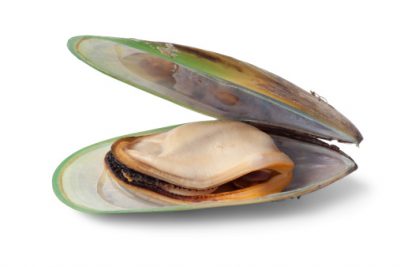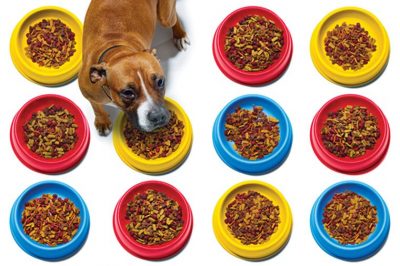
Green lipped mussels (Perna canaliculus) are one of the most wonderful foods for joint health and prevention/treatment of osteoarthritis.
As an ingredient native to New Zealand, we find them in most New Zealand brands of dog food including ZIWI Peak, K9 Natural, and Zealandia.
They’re a fantastic foodstuff for people with arthritis, and the same applies to our cats and dogs. Whether your pet has arthritis, or you simply want to prevent this eventuality, then feeding them a food or joint supplement containing green lipped mussels will almost certainly help.
Interesting fact – The Maori tribe of New Zealand have a diet rich in green lipped mussels, and are known for having the strongest bones and joints in the world.
In this article we’ll take a look at the benefits of green lipped mussels for dogs & cats, how to feed them, and where to buy them.
Related: Joint supplements for dogs (most contain green lipped mussels)
- The benefits of green lipped mussels for dogs & cats
- Why any dog or cat should have green lipped mussels in their diet
- How should I feed green lipped mussels to my pet?
- Which commercial pet foods contain green lipped mussels?
- How do green lipped mussels compare to blue lipped mussels?
- Where can I buy green lipped mussels?
- Green lipped mussels in joint supplements
- How many green lipped mussels should I feed my pet per day?
The benefits of green lipped mussels for dogs & cats
There are numerous health benefits with green lipped mussels, not just for joint health but for overall health as well.
In Australia we have blue lipped mussels which are nearly as good as an alternative, and if these are available in your local supermarket then these can be considered a suitable alternative.
Prepare to be amazed at the many benefits of green lipped mussels to our dogs and cats:
Anti-inflammatory
Green lipped mussels are a fantastic source of omega-3 fatty acids which reduce inflammation in joints, particularly when your pet is suffering osteoarthritis or other joint health problems.
Dog and cat foods are required to have a minimum amount of omega-3, but you should consider this substandard and not sufficient for helping your pet maintain strong and healthy joints.
Fewer side effects than anti-inflammatory drugs
Green lipped mussels are all natural, so what better way to treat your dog or prevent joint issues a natural way.
In contrast, anti-inflammatory drugs (known as nonsteroidal anti-inflammatory drugs or NSAIDs) often have side effects and the potential of adverse reactions, not to mention at a much higher cost to you.
Glycosaminoglycans (GAGs)
Green lipped mussels contain glycosaminoglycans (or GAGs). This may sound foreign to you, and more so if I refer to them as a negatively-charged polysaccharide compound, but they’re very beneficial for our pets.
All you need to know is glycosaminoglycans promote cartilage and synovial fluid health which help lubricate and cushion your pet’s joints.
Green lipped mussels contain glycosaminoglycans such as chondroitin sulfate and hyaluronic acid. If you’re familiar with joint supplements then you’ve probably heard about the benefits of chondroitin.
Another component of green lipped mussels is eicosatetraenoic acid (ETA) which is a form of omega 3. ETA helps prevent inflammation in joints.
It doesn’t end there either, as lyprinols and antioxidants are also found in green lipped mussels which further aid joint health in dogs & cats.
Pain relief
Our pets often suffer in silence. We know joint pain is hard to bare, but unlike our pets we can verbalise it and seek help. Our pets can’t.
The anti-inflammatory properties of green lipped mussels, combined with glycosaminoglycans and other components, should greatly reduce your pet’s joint pain whether you’re aware of it or not.
Better mobility
Joint pain and stiff joints are the biggest deterrents to your pet to get up, walk, exercise, and enjoy life. Green lipped mussels, especially in concentrations found in joint supplements, can greatly improve your pet’s mobility, usually within 2 to 4 weeks.
Support for your ageing pet
Green lipped mussels are particularly good for aging pets. No matter how well we feed our pets, sometimes joint issues in old age are inevitable. This is particularly the case for large or giant breeds, and also active or working breeds.
Green lipped mussels help maintain joint health and reduce the risk of age-related joint problems.
Why any dog or cat should have green lipped mussels in their diet
Many commercial pet foods, particularly those formulated with high carbohydrates from grains or other starchy ingredients, I would consider as a cause of poor joint health.
Research has shown 20% of dogs by the age of 1 display signs of osteoarthritis, and this increases dramatically when dogs reach middle age – as much as 80% of affected dogs. Hip and elbow dysplasia are also common joint issues more common in certain breeds, and despite being considered genetic in many cases are still affected by diet.
Unfortunately most of us are restricted by budget, and the ever increasing cost of pet foods limits us even more. We can only do our best, and feeding our dogs and cats some form of green lipped mussels (or blue lipped mussels) should greatly improve their joint health, skin, coat, and overall health and wellbeing.
My local Coles sometimes has frozen green lipped mussels in stock, and at a few bucks a bag are an excellent return on investment considering how beneficial they are to our pets.
Let’s take a look the best ways to feed your pet green lipped mussels:
How should I feed green lipped mussels to my pet?
There are four common ways of feeding green lipped mussels. These are:
- Within some pet foods as an ingredient (see below).
- As joint treats – there are good and bad options, so read the guide for arthritis and joint treats here.
- As joint supplements – you will find recommendations for good joint supplements here.
- Fresh (if you can buy them locally!).
Which commercial pet foods contain green lipped mussels?
Green lipped mussels are commonly found in pet foods manufactured in New Zealand. The following foods, rated highly by us, contain green lipped mussels as an ingredient:
- ZiwiPEAK (dog and cat formulas)
- K9 Natural (for dogs)
- Feline Natural (for cats)
- Freeze Dry Australia (for dogs).
The wet foods by ZiwiPeak and K9 Natural/Feline Natural also contain green lipped mussels.
If you want an Australian alternative, then Eureka are an excellent brand similar to ZIWI Peak which use the alternative Australian blue lipped mussels.
How do green lipped mussels compare to blue lipped mussels?
When it comes to pet foods you will find green lipped mussels to be more common for two reasons:
- The main brands which contain mussels (listed above) are all manufactured in New Zealand where green lipped mussels are locally sourced.
- There is more research into the health benefits for green lipped mussels for dogs. We can assume blue lipped mussels will offer your dog numerous health benefits, but further research must be done to determine how they compare to green lipped mussels.
Blue lipped mussels (Mytilus edulis) can be sourced locally in Australia, which is why premium foods such as Eureka (an Australian equivalent of ZiwiPeak) include blue lipped mussels and not green lipped mussels.
Where can I buy green lipped mussels?
Until recently it’s been hard to find green lipped mussels. Thankfully they’ve become more common as freeze dried treats and can be bought from pet stores or online. Freeze drying is a process which removes all water content and leaves the nutrition intact, being a great way of preserving the food and reducing weight. A 50g bag of freeze dried mussels is the equivalent of over 250g of mussels in fresh form (as a guesstimate).
Here are some options:
As a general rule you could feed one mussel a day, or every couple of days, as a treat. For a more specific formula (see below).
Green lipped mussels in joint supplements
Joint supplement might be a better option, particularly if your dog or cat is suffering joint issues or these are likely due to breed or activity level.
Sashas Blend, Antinol Rapid, and 4CYTE Canine are the leading (and proven) joint supplements in Australia. All three brands contain green lipped mussels as a main component. These joint supplements are also available for cats.
You will find more thorough information in the guide to joint supplements for dogs in Australia.
How many green lipped mussels should I feed my pet per day?
There are a few formulas based on studies. The following formula was published in a study in the Journal of Nutrition 2002 and applies to dogs and cats:
15mg of green lipped mussel powder per 1lb (1 pound) of body weight
Powder is essentially green lipped mussels with all moisture removed, with the same being the case for freeze dried offerings from manufacturers such as K9 Natural and Sunday Pets.
Here are some calculations using that formula, and converted to kilos and grams:
5kg (adult cat) – 0.165g/day
10kg (small dog) – 0.33g/day
20kg (medium dog) – 0.66g/day
When you consider a small pack of K9 Natural Green Lipped Mussels are 50g, that would mean the pack would be sufficient for a 20kg dog for 75 days!
No matter what breed of dog or cat, or how old they are, green lipped mussels are always a worthy addition to their diet.







Wondering what you think would be a good age to start including these (or joint supplements that use this ingredient) in a pup’s diet? I have a 6 month old bull arab cross so we know he is at higher risk for joint issues but unsure how early to commence.
Hi Jenna, there’s no reason why now isn’t a good time!
Pet Food Australia also contains green lipped mussels in their ingredients.
Alot of pet food manufactures claim with added green lipped mussell. However this ingredient is very unstable and has to be added at a certain part of the processing and also below a certain temperature. If a pet food claims to have added GLMP ask them what amount is in the finished product? There is no point adding it if it’s is destroyed through the cooking process.
Someone pointed out to me the other day that these mussels have recently become even easier to obtain, and are now mainstream enough that you can pick them up at coles/woolies supermarkets. (Far cheaper than the mussel options from pet food suppliers as well, as long as you don’t mind handling raw mussels). These links might not age very well, but just do a quick search for ‘mussel’ on the supermarket site if need be.
https://www.woolworths.com.au/Shop/ProductDetails/307034/woolworths-select-chilled-mussels-nz-green-shell
https://shop.coles.com.au/a/a-national/product/mussels–green-lip-frozen
Fantastic info Alan! Thanks.
$5.50/kilo can’t be sniffed at.
One of the multi billion dollar companies has decided to add green lipped mussels to their joint formula, not sure who it was though.
Not even sure why it took them so long to realise how good they are and to start using them, same with Purina and the coconut oil MCT’s even though I don’t think they derive it from coconut but rather vegetable oil? Hmm can’t remember, anyways took them forever to realise the amazing benefits for cats and dogs and than wrote something about realising it and I was like but it’s nothing new? Your just trying to make yourselves sound cooler but to me it makes you look dumber.
no wonder my pup keeps trying to chew the mussel shells we have in the garden!
If in Brisbane you can buy the dried Green Lipped Mussels at:
‘Animal Wellness’ vets in Greenslopes.
Thanks Karla!